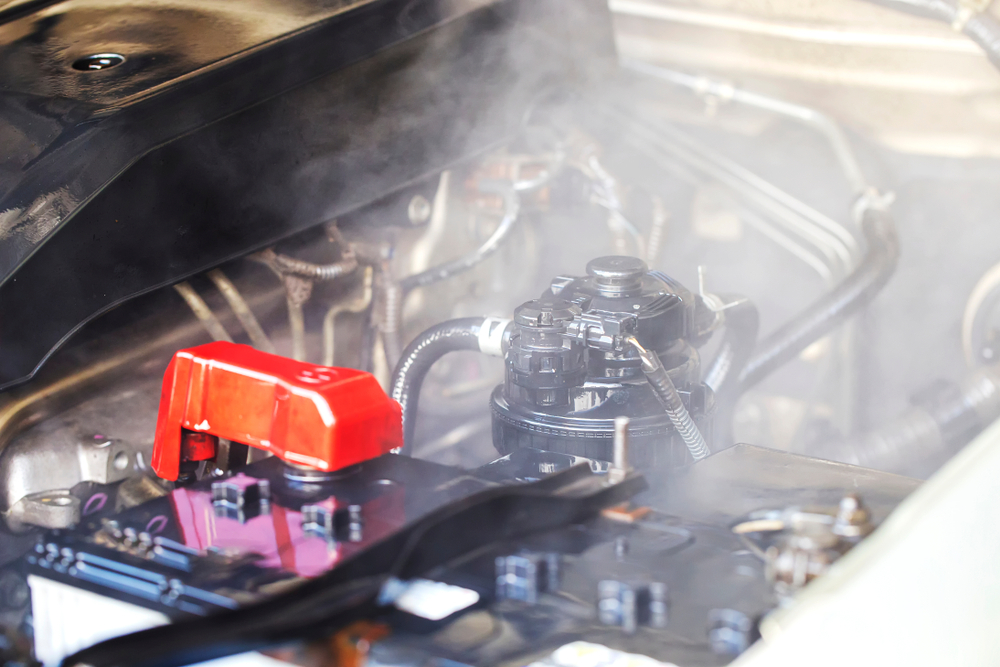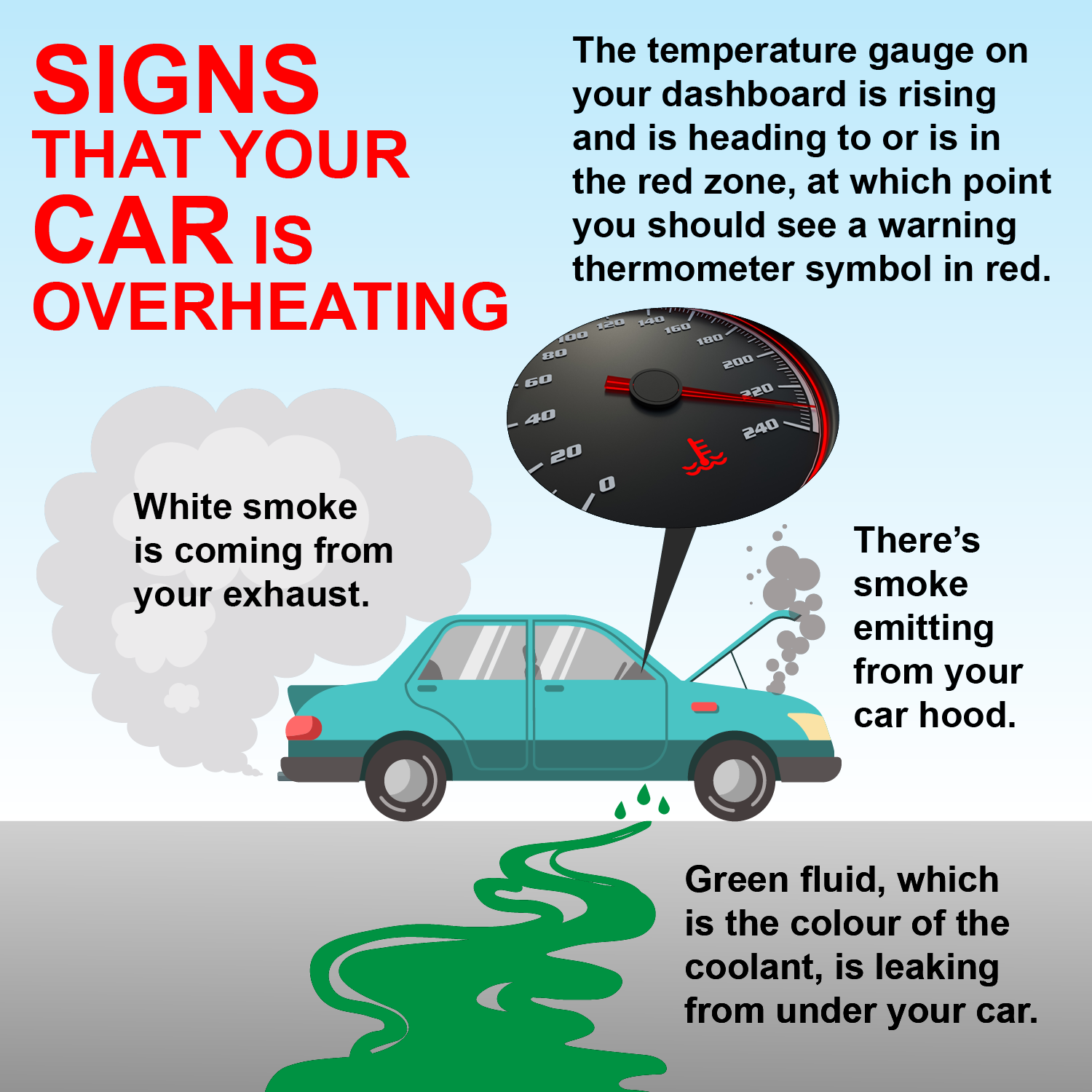An overheated engine can cause serious damage to your car. Learn about the parts of the cooling system that could be damaged and causing the condition.
 The engine of your car works within a specific temperature range, and the generated heat from the engine is managed by a cooling system that makes sure the engine is not operating in excess of this range and overheating.
The engine of your car works within a specific temperature range, and the generated heat from the engine is managed by a cooling system that makes sure the engine is not operating in excess of this range and overheating.
This cooling system comprises the water pump, radiator, coolant temperature sensor, coolant and thermostat. In the system, a cooling liquid (the coolant) is circulated through the passages in the engine block. The water pump powers the coolant through the engine block, and this coolant absorbs the heat from the engine. After leaving the engine, the heated liquid travels through the radiator where it is cooled by air entering the grille of the car. From there, the cycle repeats.
The thermostat, located between the engine and the radiator, regulates the flow of the coolant, depending on the temperature of the coolant. The coolant will be allowed to bypass the radiator and diverted back to the engine if its temperature falls below a certain point. The temperature sensor measures the coolant temperature and provides feedback to the car on how much heat the engine is giving off. The car in turn will take appropriate measures to, for example, switch on/off the electric cooling fan depending on the feedback.
 STEPS TO TAKE IF YOUR CAR IS OVERHEATING
STEPS TO TAKE IF YOUR CAR IS OVERHEATING
If you experience overheating while on the road, don’t panic.
Firstly, switch off your aircon immediately so as not to strain the car any further. Then look for a safe place to stop ASAP, as driving an overheated car can cause damage to the internal parts of the engine, such as the valves, camshafts and pistons.
At this point the engine is still very hot, so wait for it to cool down (check the temperature gauge) before you attempt to open the hood to check. Call for assistance while you wait. Once it’s reasonably cooler, pop the hood and locate the coolant reservoir tank (check your car manual). If the coolant level is low, top up if you have a spare bottle. Doing this could help protect your engine and prevent overheating while you wait for help.
If no help is available yet, determine the nearest service workshop available, restart your engine and slowly drive off, all the time keeping a close eye on the temperature gauge. If the temperature level starts building up again, pull over and switch off the engine. Do not attempt to do the above if your exhaust has white smoke coming out as that could be an indication that the engine is already seriously damaged. Just wait for help to arrive.

TAKE NOTE OF THE FOLLOWING
COOLANT: Check the coolant level — it could be too low either through a lack of maintenance or there could be a leak in the radiator. If the coolant has not been changed in a long time, it may have lost its corrosion-inhibiting property, leading to rust build-up and damage.
THERMOSTAT: The thermostat that regulates the circulation of the coolant could be stuck in the closed position, not allowing the coolant to flow. This may cause coolant leakage around the thermostat housing, in turn causing other coolant hoses to leak as well, often out onto the ground under your car.
TEMPERATURE SENSOR: If the coolant temperature sensor is faulty and is falsely indicating that the engine is cold, the engine will try to compensate by heating up the engine. When this happens, the car may misfire or it could lead to the engine knocking.
WATER PUMP: If the water pump pulley is loose, you may hear a high-pitched sound from the front of the engine. This means that the belt is slipping off and causing the pump to fail, affecting the flow and quantity of coolant. If this is not addressed quickly, it may cause additional damage to other parts of the engine.
Don’t miss out on your car’s maintenance, as regular inspection and checks will nip any potential issues and problems in the bud before they become worse.



